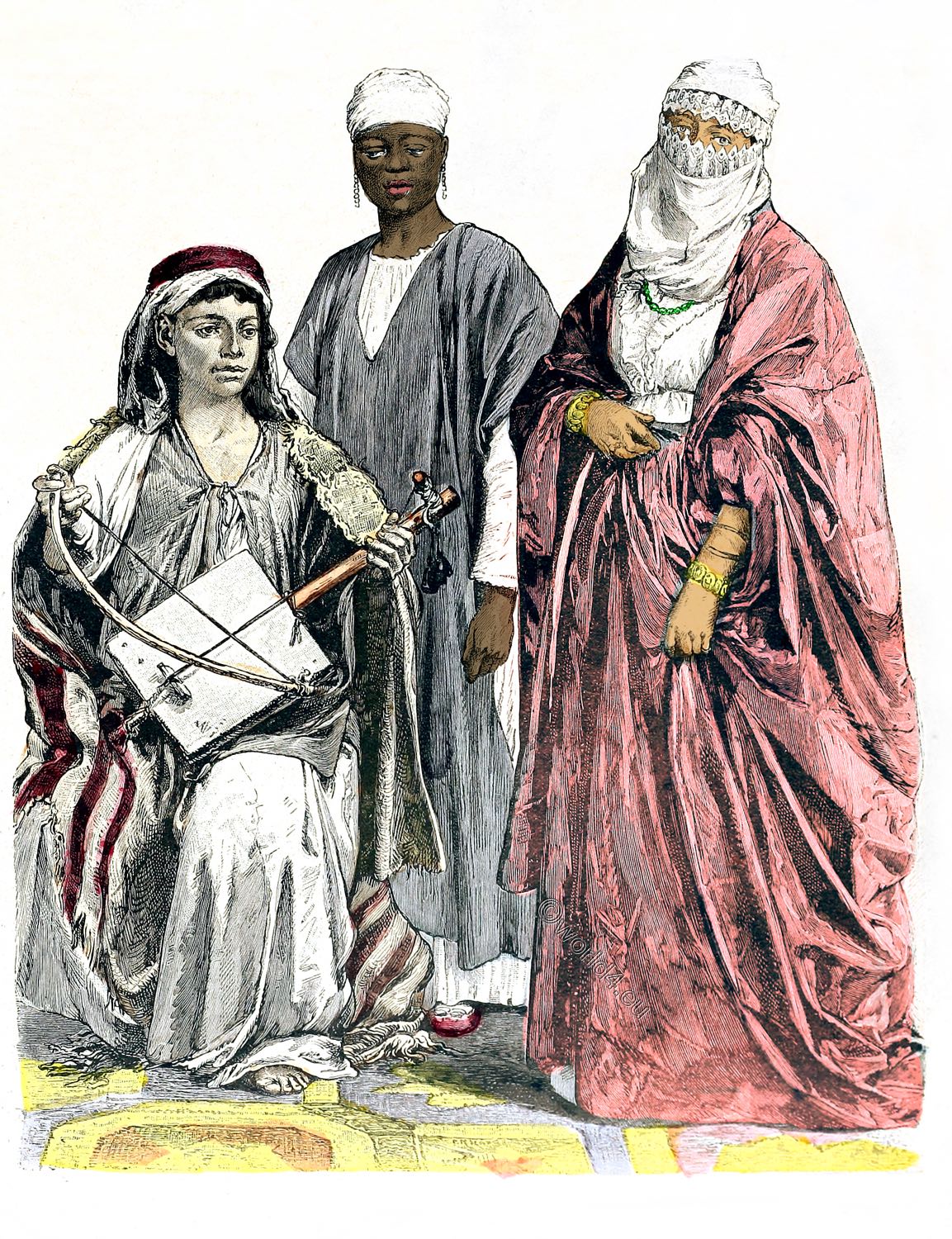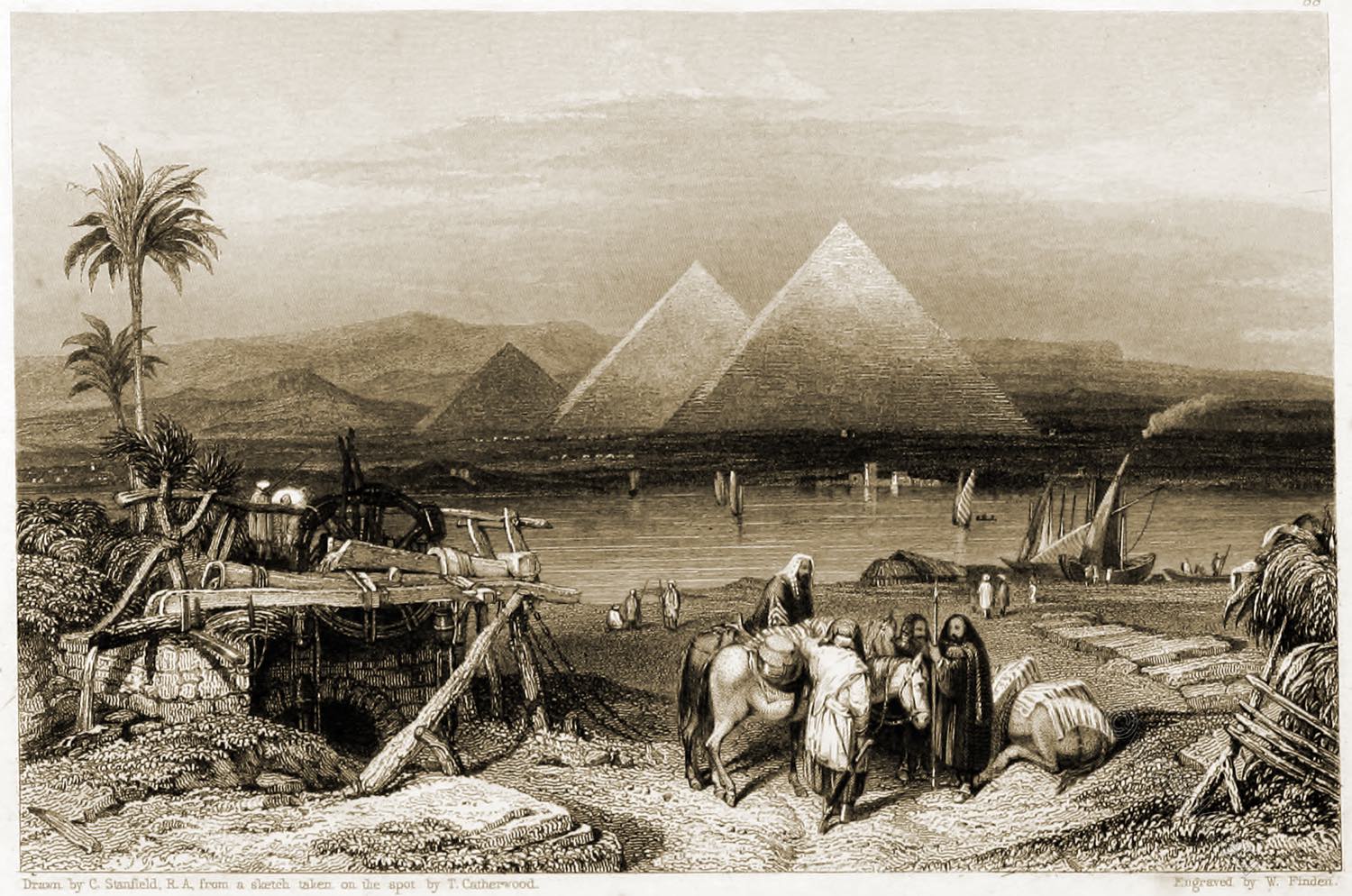
Residents of Port Said with Water Seller.
Traditional Egypt costumes in 1850.
The history of costumes. Sixty-sixth table. Egypt. Illustration by A. Häberlin. Munich picture sheet no. 950.
A woman with a veil and headscarf wearing a precious cloth cord embroidery on the arm, to a light tunic abaya. Her husband wears a fez as headgear, a precious long necklace and a collar made of ivory. To an open jacket, a harem pants, the Sal Sapik, (SAL û Sapik “pants and shirt”), girt with a broad cloth.
The vest is made of precious white silk embroidered red and deposed. Red was the color of wealth. The same color is the shirt with decorative buttons.
Pictured right a water seller in a turban, tarboosh, vest, and high belted caftan.
Source: Munich picture sheet 1848 to 1898. The history of costumes. Published by Braun & Schneider. Royal court and university book printing house of Dr. C. Wolf & Sohn in Munich.






